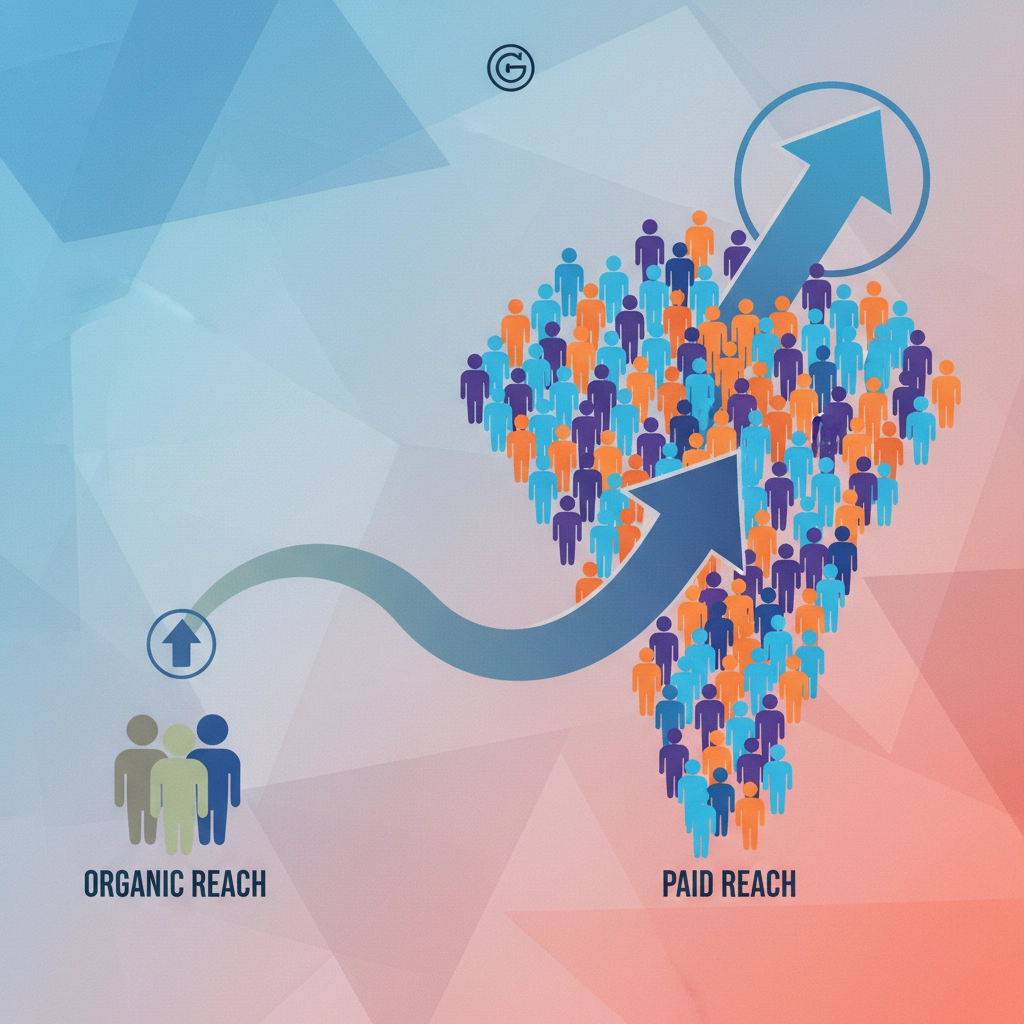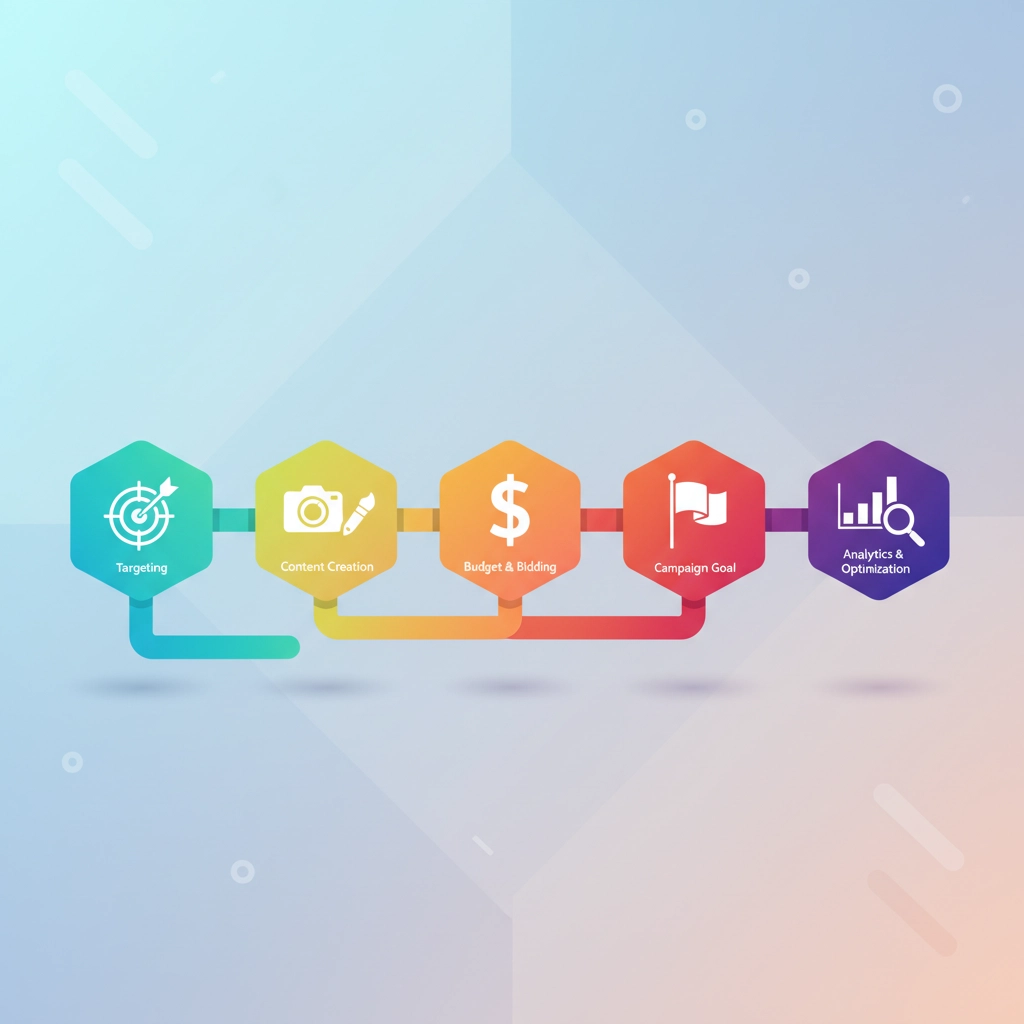If you’re still relying solely on organic social media posts to grow your small business, you’re essentially shouting into an empty room. The harsh reality is that organic reach on social platforms has collapsed to the point where most of your followers will never see your content: no matter how compelling or valuable it is.
The numbers tell a sobering story: Instagram’s average organic reach now sits at just 4%, while Facebook languishes at an even lower 2.6%. This means that out of every 1,000 followers you have, only 26-40 people will actually see your posts organically. Meanwhile, businesses investing in paid social media campaigns are reaching exponentially more people and driving significantly better results.
The Death of Organic Reach: Why Free Posting No Longer Works
Social media platforms have fundamentally shifted from being free marketing channels to paid advertising platforms. This isn’t an accident: it’s a calculated business model. Facebook, Instagram, LinkedIn, TikTok, and other platforms generate revenue through advertising, which means their algorithms now heavily favor paid content over organic posts.
Consider this: when you post organically, you’re competing against millions of other posts for space in your audience’s feed. The platform’s algorithm decides who sees your content based on factors largely outside your control, including engagement history, post timing, and the user’s current activity patterns. Even if someone actively follows your business page, there’s no guarantee they’ll see your latest update.

This algorithmic suppression has created what marketers call the “pay-to-play” environment. Businesses that refuse to invest in paid promotion find themselves increasingly invisible, while those embracing paid strategies consistently appear in their target audience’s feeds.
The Dramatic Impact: How Paid Social Delivers Exponentially More Views
When businesses transition from organic-only posting to strategic paid campaigns, the visibility increase can be staggering. While organic posts might reach 2-4% of your followers, paid ads can reach 100% of your targeted audience: plus thousands of potential new customers who’ve never heard of your business.
Here’s where the mathematics become compelling: if your organic posts typically reach 40 people out of 1,000 followers, and a paid campaign reaches 4,000 people (including both existing followers and new prospects), you’ve achieved a 1000% increase in visibility. This isn’t theoretical: it’s the practical reality many small businesses experience when they start investing in paid social media marketing.
Bypassing Algorithmic Limitations
Paid advertisements operate outside the standard algorithmic constraints that limit organic content. When you pay for promotion, the platform guarantees your content will be seen by your specified audience. This means every dollar spent translates directly into guaranteed impressions, rather than hoping the algorithm will favor your post.
Precision Targeting Capabilities
Unlike organic posts that rely on followers and algorithmic distribution, paid ads allow you to target exactly who you want to reach. You can segment audiences by:
- Demographics (age, gender, income, education level)
- Geographic location (city, state, radius around your business)
- Interests and behaviors (fitness enthusiasts, frequent online shoppers, specific hobbies)
- Purchase history and online activity
- Life events and milestones
This targeting precision ensures your marketing budget reaches people most likely to become customers, rather than being wasted on uninterested audiences.
How Paid Social Media Advertising Works (The Simple Explanation)
Understanding paid social media doesn’t require a marketing degree. At its core, it’s about paying platforms to show your content to specific groups of people who are most likely to be interested in your business.

The Basic Process:
- Define Your Audience: Determine who your ideal customer is and where they spend time online
- Create Compelling Content: Develop ads that speak directly to your audience’s needs and interests
- Set Your Budget: Decide how much you want to spend daily or monthly
- Choose Your Objective: Whether you want more website visits, phone calls, or direct sales
- Launch and Monitor: Start your campaign and track performance metrics
Campaign Types That Work for Small Businesses:
Awareness Campaigns introduce your business to new potential customers in your area. A local restaurant might target food enthusiasts within a 10-mile radius with mouth-watering photos of their signature dishes.
Traffic Campaigns drive people to your website or online store. An e-commerce business could promote their best-selling products to people who have shown interest in similar items.
Conversion Campaigns focus on generating specific actions like purchases, appointments, or sign-ups. A fitness trainer might offer a free consultation to people interested in personal training services.
Cost-Effectiveness: Why Paid Social Delivers Better ROI Than You Think
Many small business owners assume paid social media requires massive budgets, but the reality is quite different. Most platforms offer surprisingly affordable advertising options that can fit even modest marketing budgets.
On Meta platforms (Facebook and Instagram), the average cost per click typically ranges from $0.50 to $2.00, depending on your industry and targeting parameters. TikTok and LinkedIn offer similar pricing structures, with TikTok often providing even lower costs for younger demographics.
Budget Guidelines for Small Businesses:
- Starter Budget: $200-500 monthly can generate meaningful results for local service businesses
- Growth Budget: $500-1,500 monthly allows for broader reach and multiple campaign types
- Scale Budget: $1,500+ monthly enables comprehensive multi-platform strategies
The key is consistency rather than large sporadic investments. A steady $300 monthly budget will typically outperform a one-time $1,000 campaign because it allows for continuous optimization and audience building.

Actionable Steps to Launch Your First Paid Campaign
Step 1: Start with Your Best-Performing Organic Content
Review your organic posts from the past three months and identify which ones received the highest engagement. These proven performers make excellent candidates for paid promotion because they’ve already demonstrated audience appeal.
Step 2: Define Your Target Audience
Begin with a detailed description of your ideal customer. Consider their age range, location, interests, and online behaviors. Most platforms offer audience insights tools that can help refine your targeting based on your existing followers.
Step 3: Choose the Right Platform
- Facebook/Instagram: Excellent for local businesses and visual content
- LinkedIn: Ideal for B2B services and professional targeting
- TikTok: Perfect for reaching younger demographics with video content
- Twitter: Effective for real-time engagement and news-related businesses
Step 4: Set Clear Objectives and Budgets
Determine what success looks like for your campaign. Are you seeking more website traffic, phone calls, or direct sales? Set daily budgets you can sustain consistently: it’s better to spend $20 daily for a month than $200 in a single day.
Step 5: Create Mobile-First Content
Over 80% of social media consumption happens on mobile devices, so ensure your ads look compelling on smartphone screens. Use high-quality images, readable text, and clear calls-to-action that work well on smaller displays.
Step 6: Monitor and Optimize Weekly
Check your campaign performance weekly and make small adjustments based on what’s working. Look for patterns in high-performing ads and expand successful strategies while pausing underperforming content.
Advanced Strategies for Maximum Impact
Retargeting Campaigns
Create campaigns targeting people who have visited your website or engaged with your content but haven’t made a purchase. These warm audiences typically convert at much higher rates than cold traffic.
Lookalike Audiences
Upload your customer email list to create “lookalike” audiences: people who share similar characteristics with your existing customers. This strategy helps identify new prospects most likely to be interested in your business.
Seasonal and Event-Based Campaigns
Plan campaigns around holidays, local events, or industry-specific seasons when your target audience is most likely to need your services.
The Bottom Line: Paid Social Is No Longer Optional
The businesses still relying solely on organic posting are essentially choosing to be invisible in today’s social media landscape. While organic content remains important for building relationships with existing customers, paid promotion has become essential for reaching new audiences and driving growth.
Small businesses that embrace this reality and start investing in strategic paid campaigns consistently outperform competitors who haven’t adapted to the new social media environment. The question isn’t whether you can afford to invest in paid social media: it’s whether you can afford not to.

Ready to unlock exponentially better results for your business? The team at Digital Traffic Factory specializes in creating cost-effective paid social media campaigns that deliver measurable results for small businesses. We’ll help you navigate platform complexities, optimize your budget, and create campaigns that actually convert browsers into buyers.
Want to unlock bigger results for your business? Email robert@digitaltrafficfactory.com or call 203-217-9496 and let’s talk paid social! We’ll analyze your current social media performance and show you exactly how paid campaigns can transform your visibility and grow your customer base.
